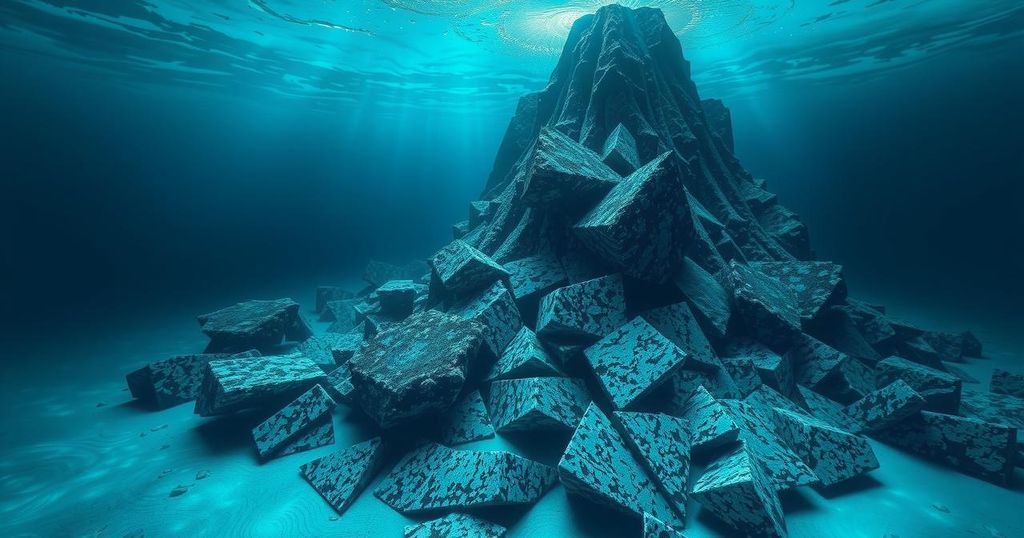Science
BEAUFORT SEAS, CANADA, CHUKCHI AND, COAST GUARD, EDUCATION, ENVIRONMENTAL IMPACT, HEALY, INTERAGENCY, MCGOVERN, MEG, NATIONAL OCEANIC AND ATMOSPHERIC ADMINISTRATION, NATURE, NORTH AMERICA, RESEARCH, SCIENCE, SUSTAINABILITY, U. S, U. S. COAST GUARD, U. S. COAST GUARD CUTTER HEALY, UNIVERSITY OF NEW HAMPSHIRE
Nina Oliviera
0 Comments
U.S. Coast Guard Cutter Healy Makes Strides in Arctic Exploration
The U.S. Coast Guard Cutter Healy is conducting a 2024 Arctic deployment, discovering a volcano-like feature under the sea. The mission involves multiple scientific teams in collaboration with federal agencies to map uncharted waters and enhance navigation safety. It also provides valuable training for early career scientists, preparing them for future polar expeditions.
The U.S. Coast Guard Cutter Healy has made quite the splash – figuratively, at least – as it dives into the Arctic waters off Alaska during its 2024 deployment. This ambitious venture, which kicked off with two completed phases by Sunday, sees Healy team up with various scientific organizations, including the National Science Foundation (NSF) and NOAA, to explore the unknown aquatic landscape. And guess what? They’ve even stumbled upon a volcano-like feature hidden beneath the waves!
During these initial phases, Healy and her scientific teams have been busy conducting seafloor mapping missions and other critical research. One of the highlights was the discovery of a spooky-seeming underwater feature that rises 500 meters from the seabed—found at a depth of 1,600 meters! Intriguingly, it seems there’s a potential gas plume making its way to the surface from this underwater oddity. Thankfully, navigational safety isn’t an issue; it’s far enough below where vessels usually sail.
What’s more fascinating about this mission is how collaborative it is. The U.S. Coast Guard is not alone; it’s got the NSF, NOAA, and even the University of New Hampshire lending a helping hand. Their focus is on the Arctic Coast Port Access Route Study, a concept that proposes safer vessel transit from Utqiaġvik, Alaska, to the U.S.-Canada border mark. Together, they are gathering oceanographic data and depth measurements to ensure safer passage and better understanding of this remote marine region.
Capt. Meghan McGovern, who’s with NOAA Ship Fairweather and part of the mapping crew aboard Healy, stated, “Although data analysis is ongoing, these findings are exciting…” She pointed out the critical collaborative nature of this mission as filling significant knowledge gaps. Indeed, mapping and understanding these uncharted waters is vital not just for navigation but also for future research and safety in the region.
But it’s not just seasoned scientists aboard! The second phase of Healy’s deployment saw postdoctoral researchers and junior faculty members from various institutions join the expedition. Supported by an NSF program aimed at early career scientists, they got their fair share of hands-on experience and training while mapping these icy waters, hoping to uncover more of the mysteries underneath.
While gathering data, these scientists didn’t shy away from looking into a broad array of subjects; they filled bathymetric gaps and engaged in scientific sampling that spans various disciplines. There’s leadership training too, preparing them to take charge of their own future scientific endeavors and expeditions.
“It’s an honor supporting such diverse research missions…“ said Capt. Michele Schallip of the Healy. She highlighted the importance of enhancing navigation safety in a sparsely charted area like the Arctic. The growing scientific interest in the Arctic means that the icy waters often come to life, filling a crucial role as a research platform while simultaneously inspiring the next generation of scientists.
Homeported in Seattle, the Healy stands as a unique icebreaker – one specifically built for research purposes. It’s the only one of its kind in the Coast Guard fleet, capable of reaching regions that most other research vessels would struggle to access. These capabilities allow for real exploration in the challenging Arctic environment, a key area for future scientific discovery and understanding.
The U.S. Coast Guard Cutter Healy continues to navigate the icy northern waters, unveiling mysteries like a volcano-like feature beneath the surface during its 2024 Arctic deployment. This cooperative effort among several scientific organizations not only fills crucial gaps in knowledge but also provides valuable training and experiences for early career scientists. With the Healy at the forefront, future exploration and understanding of the Arctic region stands to gain significantly, ensuring safer navigation and expanding scientific horizons.
Original Source: www.news.uscg.mil




Post Comment